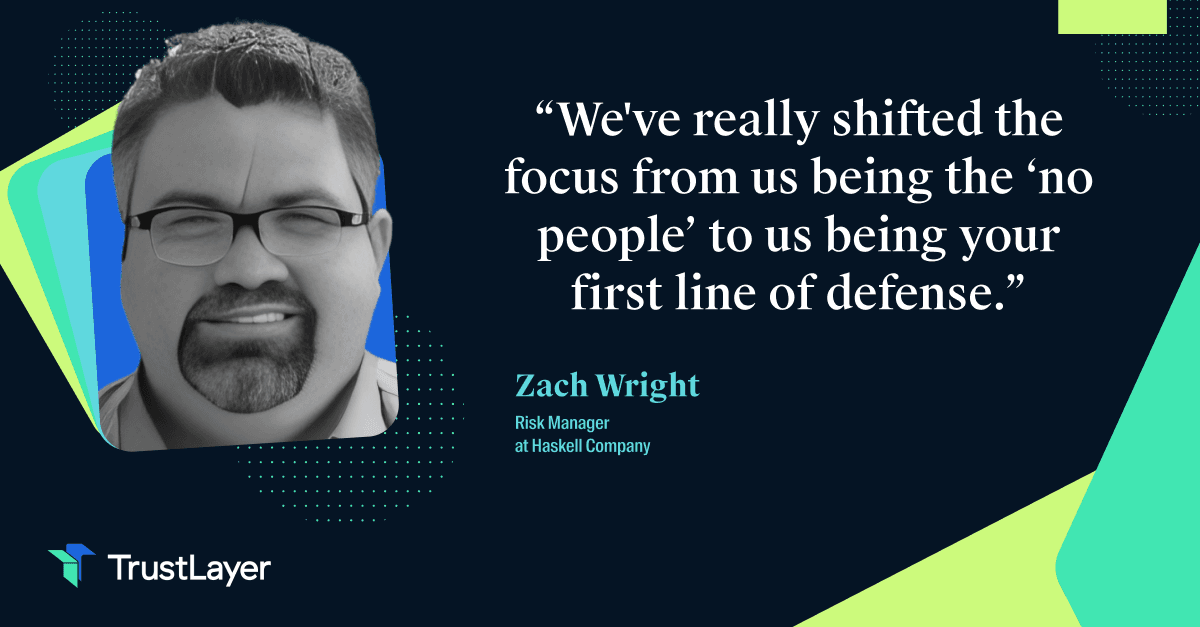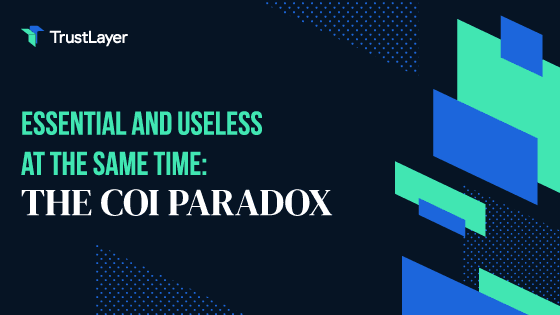How CEOs Can Drive Business Success by Integrating Risk Transfer into Strategic Leadership
In today's dynamic business environment, the intricacies of risk management and brand trust are intrinsically linked. CEOs are pivotal in this relationship, mainly through risk transfer strategies. This article explores the fundamental concepts surrounding risk transfer, the responsibilities of CEOs in risk strategy, and how effective risk management practices can enhance brand trust and support sustainable business growth.
Understanding the Concept of Risk Transfer
Risk transfer is a foundational strategy that involves shifting the responsibility of a certain risk from one party to another. This is often achieved through insurance contracts, outsourcing, and contractual agreements. The concept is not just about offloading risks; it’s about strategic decision-making aligning with a company’s broader objectives.
The Basics of Risk Transfer
At its core, risk transfer involves two parties—the transferor and the transferee. The transferor, often an organization or individual, seeks to minimize their exposure to potential losses. The transferee agrees to shoulder these risks, often for a fee, which could be seen in various scenarios, such as insurance coverage or contractual obligations. This relationship is symbiotic, where both parties benefit by reducing uncertainty. For instance, in construction, a contractor may transfer the risk of project delays to a subcontractor, allowing the contractor to focus on other critical aspects of the project while ensuring that the subcontractor is incentivized to meet deadlines.
Importance of Risk Transfer in Business
The significance of risk transfer in business cannot be understated. According to a recent study, approximately 80% of companies employing formal risk transfer mechanisms have recorded lower operational disruption and higher overall profitability. By proactively managing risks, organizations protect themselves financially and their market reputation, instilling confidence among stakeholders and customers. Furthermore, effective risk transfer can lead to enhanced strategic partnerships; for example, businesses that engage in risk-sharing agreements often find themselves better positioned to innovate and adapt to market changes, as they can allocate resources more effectively without the looming fear of catastrophic losses. This collaborative approach fosters a culture of resilience and agility, crucial traits in today’s fast-paced business environment.
Moreover, the risk transfer landscape is continually evolving, influenced by technological advancements and changing regulatory frameworks. Companies now leverage sophisticated data analytics to assess risks more accurately and tailor their risk transfer strategies accordingly. This enhances the precision of risk assessment and allows for more customized insurance products that better fit the business’s unique needs. As organizations navigate the complexities of global markets, understanding and implementing effective risk transfer strategies becomes increasingly vital, ensuring they remain competitive while safeguarding their interests.
The CEO's Role in Risk Strategy
The CEO occupies a unique position within the organization, encompassing a broad view of risk and opportunity. Their involvement is not merely administrative; it is strategic. Effective risk management requires a top-down approach, where the CEO sets the tone for risk culture and the value placed on brand trust.
Defining the CEO's Role in Risk Management
The CEO's role in risk management extends beyond compliance functions. It involves actively shaping the organization’s risk appetite and facilitating discussions about potential vulnerabilities. This leadership must be proactive rather than reactive. CEOs should champion risk initiatives that communicate transparency to stakeholders and showcase a commitment to robust risk management practices. Furthermore, they must ensure that risk management is integrated into the overall business strategy, aligning risk considerations with the organization’s goals and objectives. This alignment enhances decision-making and enforces the importance of risk awareness at all levels of the organization.
How CEOs Can Influence Risk Strategy
CEOs can significantly influence risk strategy through direct communication and collaboration with heads of departments, particularly finance, operations, and marketing. By establishing a cross-functional risk management team, CEOs ensure that diverse perspectives shape the risk strategies adopted. A recent analysis indicated that organizations led by CEOs involved in risk discussions consistently reported greater agility and resilience in facing market changes. Additionally, CEOs can leverage technology and data analytics to identify emerging risks and trends, allowing for more informed decision-making. By fostering a culture of innovation and encouraging teams to share insights on potential threats, CEOs can create an environment where proactive risk management becomes a shared responsibility across the organization.
Moreover, the CEO's visibility in risk management initiatives can enhance the organization's reputation among investors and customers. When stakeholders see the CEO actively engaging in risk strategy, it builds confidence in the leadership and the organization’s ability to navigate uncertainties. This visibility can also attract top talent eager to work for a company that prioritizes risk management as a key component of its strategic vision. In this way, the CEO not only influences the internal dynamics of risk management but also shapes the external perception of the organization in a competitive marketplace.
Building Trust Through Effective Risk Management
Trust is the underpinning of any successful business relationship. When stakeholders perceive that an organization effectively manages risks, their confidence and loyalty grow. As a result, building trust is not an ancillary activity; it is a strategic imperative.
The Connection Between Trust and Risk Management
Research shows that companies with solid risk management frameworks are viewed as more trustworthy. A survey highlighted that 76% of consumers are more likely to support brands that demonstrate transparency in their risk management processes. This link between trust and risk management suggests that in a world where information is readily available, stakeholders assess not what a company offers but how it operates. Furthermore, organizations that proactively address potential risks often find themselves at a competitive advantage, as they can pivot more swiftly in response to market changes or crises, thereby reinforcing stakeholder trust in their resilience and reliability.
Strategies for Building Trust Through Risk Management
- Transparency: Maintain open communication regarding risk policies and their implications.
- Education: Train employees and stakeholders about risk management practices to cultivate a culture of awareness.
- Engagement: Involve customers and stakeholders in the risk assessment to foster collaborative trust.
- Certifications: Utilize certificates of insurance to demonstrate commitment to managing and mitigating risks in operations.
By implementing these strategies, CEOs can cultivate an environment where trust thrives, creating a positive feedback loop where stakeholder confidence leads to business success. Moreover, organizations can benefit from regular audits and assessments of their risk management strategies, ensuring they remain relevant and effective in a rapidly changing landscape. This continual improvement enhances operational resilience and signals to stakeholders that the organization is committed to maintaining high standards of accountability and integrity in its practices.
Additionally, leveraging technology can be pivotal in enhancing risk management efforts. Advanced analytics and risk assessment tools can provide real-time insights into potential vulnerabilities, enabling organizations to act swiftly and decisively. By adopting a proactive approach to risk management, businesses can safeguard their assets and reassure stakeholders that their interests are being prioritized. This technological integration fosters a culture of innovation and responsiveness, further solidifying stakeholder’s trust in the organization.
Aligning Risk Practices with Brand Trust
Aligning risk practices with brand trust requires an integrative approach that considers operational and reputational factors. CEOs must strategically align their risk practices to reflect the values and promises associated with their brand, ensuring that any risk undertaken does not undermine consumer trust. This alignment is not merely a reactive measure but a proactive strategy that can differentiate a brand in a crowded market. By embedding trust into the fabric of their operations, companies can create a competitive advantage that resonates with consumers on a deeper level.
The Impact of Risk Practices on Brand Trust
Today’s consumers are more discerning than ever before. A study found that 87% of consumers would not engage with a company that has experienced repeated reputational crises linked to risk mismanagement. This underscores the importance of aligning risk practices with brand trust—once trust is lost, it can take years to rebuild. Furthermore, the digital age has amplified the speed at which information travels, meaning that a single misstep can lead to widespread scrutiny and backlash. Brands must be vigilant, as the consequences of poor risk management can ripple through social media, affecting consumer perceptions and potential future customers.
Steps to Align Risk Practices with Brand Trust
- Assess Current Practices: Regularly evaluate existing risk management strategies and their alignment with brand values.
- Incorporate Stakeholder Input: Gather insights from consumers and employees about their perceptions of risk and trust.
- Develop a Unified Framework: Create a robust risk management framework that integrates trust-building measures into everyday practices.
- Monitor and Adapt: Continuously track the impact of risk practices on brand perception and adapt strategies as needed.
In doing so, organizations can ensure that their risk practices enhance—not detract from—the values their brand represents. Moreover, fostering a culture of transparency and accountability within the organization can further solidify brand trust. When employees feel empowered to voice concerns and contribute to risk management discussions, it improves internal morale and reflects positively on external brand perception. This collaborative approach can lead to innovative solutions that anticipate potential risks before they escalate, ultimately reinforcing consumer confidence in the brand.
Additionally, leveraging technology can be pivotal in aligning risk practices with brand trust. Advanced analytics and real-time monitoring tools can provide invaluable insights into consumer sentiment and emerging risks. By utilizing these technologies, brands can respond swiftly to potential threats and engage with their audience in meaningful ways, demonstrating their commitment to maintaining trust. In a world where consumer loyalty is increasingly tied to ethical practices and transparency, brands prioritizing risk management as a core aspect of their identity will likely foster lasting relationships with their customers.
Risk Strategy and Business Growth
Effective risk management is not only about minimizing losses; it’s also an enabler of business growth. CEOs can create opportunities that drive innovation and market expansion by strategically leveraging risk.
How Risk Strategy Influences Business Growth
A well-structured risk strategy allows organizations to embrace potential opportunities with confidence. Companies implementing successful risk transfer strategies typically see a 22% increase in growth and new market opportunities. When CEOs prioritize risk management, they empower their organizations to take calculated risks, leading to competitive advantages. This proactive approach helps identify potential pitfalls and encourages teams to pursue ventures that may have previously seemed too daunting. As organizations become more adept at navigating uncertainties, they cultivate a resilient mindset that fosters agility and responsiveness in a rapidly changing market landscape.
Optimizing Risk Strategy for Business Expansion
- Invest in Technology: Utilize advanced analytics to identify trends and mitigate risks before they escalate.
- Diversify Offerings: Explore new products and services to spread risk across market segments.
- Encourage Innovation: Foster an organizational culture that encourages innovative problem-solving approaches to risk.
- Engage in Continuous Learning: Learn from previous experiences to continuously refine and enhance risk strategies.
By optimizing risk strategies, organizations position themselves to harness potential opportunities, establishing themselves as leaders in their respective industries. Furthermore, integrating risk management into the core business strategy ensures that all levels of the organization are aligned with the overall vision. This alignment not only enhances operational efficiency but also builds a robust framework for decision-making that is informed by data and strategic foresight. As a result, businesses can pivot quickly in response to market changes, seizing opportunities that competitors may overlook.
In addition to these strategies, fostering strong relationships with stakeholders—such as investors, customers, and regulatory bodies—can significantly enhance a company's ability to manage risk effectively. Transparent communication about risk management practices can build trust and confidence, encouraging stakeholders to support the organization’s growth initiatives. Engaging with these groups provides valuable insights and creates a network of advocates who can help navigate challenges and amplify successes. As organizations refine their risk strategies, the interplay between risk management and stakeholder engagement will become increasingly vital in driving sustainable growth.
In conclusion, the role of the CEO in risk strategy is critical to both risk transfer and the cultivation of brand trust. As organizations navigate the complexities of modern business, understanding these connections will empower leaders to foster a culture of accountability and trust that supports sustained growth and success.
As we've explored the crucial role of CEOs in risk strategy and the importance of aligning risk management with brand trust for business growth, it's clear that modern tools are essential for today's risk managers. TrustLayer is at the forefront of this innovation, offering a best-in-class certificate of insurance (COI) tracker designed to streamline and automate the verification process. With TrustLayer, you can eliminate the administrative burden of manual document collection and verification, freeing up valuable time and resources. Embrace the future of risk management and join the hundreds of thousands of companies that have already discovered the efficiency of TrustLayer. Don't let outdated processes hold you back. Set up a time to talk with our team and see how TrustLayer can transform your risk management strategy.








